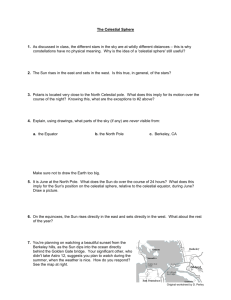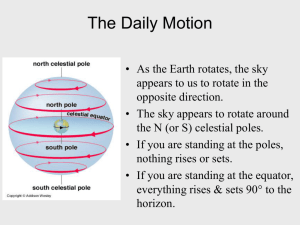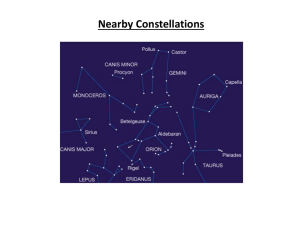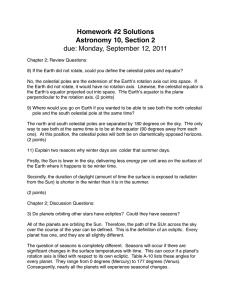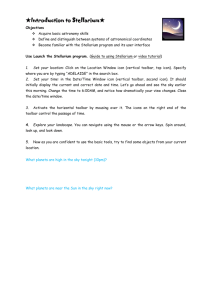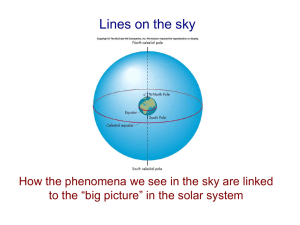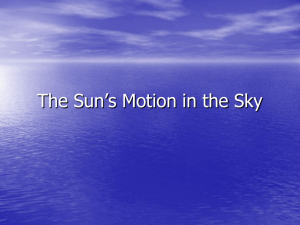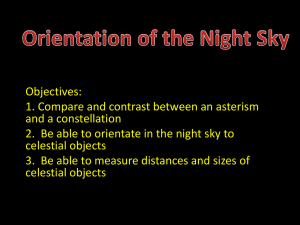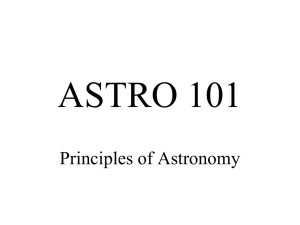Lecture 3 -- Astronomical Coordinate Systems
advertisement
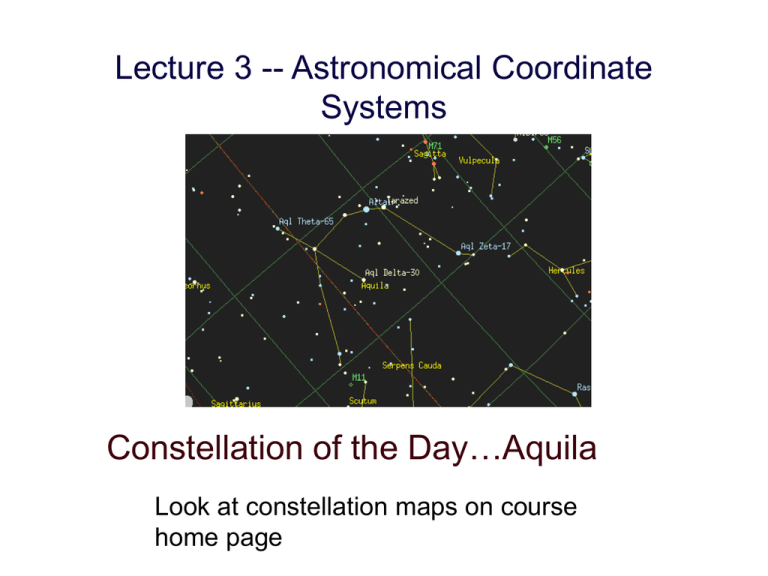
Lecture 3 -- Astronomical Coordinate Systems Constellation of the Day…Aquila Look at constellation maps on course home page Last time: seasonal differences in the sky At different times of year we see different constellations in the evening sky, etc. Can be understood as the Sun moving through different constellations Show illustration with constellations link on home page Measuring the position of the Sun against the background stars The path of the Sun through the stars Note that the Sun only moves through certain constellations Virgo, Libra,Scorpius, Sagittarius, Capricornus, etc. What is the connection here? Will return to the significance later Question: what’s causing this? The “parade of the constellations” Demo Also look at online animation with the book web site Last time: Earth’s orbital motion (revolution) explains “parade of constellations” Plane of Earth’s orbit around Sun called “plane of ecliptic” Revolution cannot explain seasonal changes in rising and setting of Sun and Moon Obliquity of the Ecliptic and the Altitude Angle of the Sun Explanation of Seasonal Variations: tilt of the Earth’s axis: obliquity of the ecliptic The celestial sphere, the celestial pole, and the celestial equator Two Lines on the Sky •The ecliptic •The celestial equator •See Figure 2.11 Astronomical Scientific Terms • • • • • • Meridian Celestial sphere Zenith Azimuth and altitude Ecliptic Celestial equator For new purposes, we need a different coordinate system Analogy: I am riding my bike on a dirt road near Lone Tree, and want to describe to someone in London the location of a radio tower I see in the distance. Question: what system of coordinates do I use? A New Coordinate System: Celestial Coordinates • The stars “stick together” and define their own reference system. The planets move with respect to them • Celestial coordinates are Right Ascension and Declination • Right Ascension ….. Longitude • Declination ….latitude • http://sohowww.nascom.nasa.gov/ Questions
